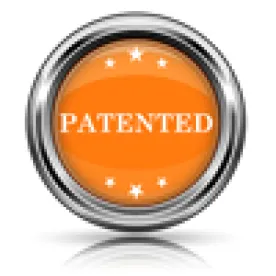It is settled law under 35 U.S.C. § 287 that when the patent owner sells or authorizes the sale of a patented product, it must comply with the statute’s marking requirement to obtain the benefit of constructive notice or else damages do not begin to accrue until actual notice is given to the infringer. In Arctic Cat Inc. v. Bombardier Rec. Prods.,[1] (Arctic Cat II), the Federal Circuit held that § 287 limits damages even after a patentee or its licensee ceases sales of unmarked products and that a finding of willful infringement does not establish actual notice under § 287.
The pertinent factual circumstances of the case are as follows. Arctic Cat owns U.S Patents 6,793,545 and 6,568,969, both of which relate to thrust steering systems for personal watercraft. Arctic Cat entered into a license agreement with Honda to permit Honda to exploit these thrust steering patents. The initial draft of the license agreement required that Honda mark all licensed products with the thrust steering patent numbers, but the final version of the license agreement provided that Honda had no marking obligation. Honda then began making and selling unmarked personal watercraft that used the thrust steering patents.
Arctic Cat sued Bombardier for infringement of the thrust steering patents. Before trial, Bombardier moved to limit potential damages because of the unmarked product sales by Honda. The district court denied the motion, holding that Bombardier failed to prove that the unmarked Honda personal watercraft practiced the thrust steering patents. At trial, the jury found that Bombardier had willfully infringed the patents. After trial, the district court denied Bombardier’s renewed motion for judgement as a matter of law limiting damages under § 287 and willfulness. The district court again held that Bombardier failed to meet its burden of proving that the Honda personal watercraft practiced the thrust steering patents. Bombardier then appealed to the Federal Circuit.
In a first appeal, Arctic I,[2] the Federal Circuit affirmed the willfulness finding but vacated and remanded as to marking. The Federal Circuit determined that the district court erred in placing the burden on Bombardier to prove that the Honda personal watercraft practiced the thrust steering patents. The Federal Circuit held that the patentee (Arctic Cat) bears the burden of proving that unmarked products do not practice the claimed invention. On remand, Arctic Cat conceded that it could not meet this burden, but it argued that the damages limitation of 35 U.S.C. § 287 only applies while a patentee or its licensees are actively making, using, or selling unmarked products. Arctic Cat further argued that the jury’s finding of willful infringement is sufficient to demonstrate actual notice under § 287. In a motion for summary judgement, Bombardier argued that Arctic Cat could not recover pre-suit damages because of the sale of the unmarked Honda personal watercraft and because Arctic Cat otherwise failed to provide actual notice under § 287. The district court granted this motion, and Arctic Cat appealed.
In the second appeal, Arctic Cat II, the Federal Circuit disagreed with Arctic Cat’s argument that the damages limitation of 35 U.S.C. § 287 only applies while a patentee is actively making, using, or selling unmarked products. The Federal Circuit explained that,
“Arctic Cat’s obligation to mark arose when [Honda] began selling patented Articles. The cessation of sales of unmarked products certainly did not fulfill Arctic Cat’s notice obligations under § 287, nor did it remove the notice requirement imposed by the statute. The notice requirement to which a patentee is subjected cannot be switched on and off as the patentee or licensee starts and stops making or selling its product.”
In reaching this holding, the Federal Circuit considered the purpose of § 287, explaining that the notice requirement serves the related purposes of helping to avoid innocent infringement, encouraging patentees to give notice that an article is patented, and aiding the public to identify whether an article is patented. The Federal Circuit concluded that “[r]equiring a patentee who has sold unmarked products to provide notice in order to begin recovering damages advances these objectives by informing the public and possible infringers that the Article is patented.”
Moreover, the Federal Circuit disagreed with Arctic Cat’s argument that willful infringement is sufficient to demonstrate actual notice under § 287. Citing Amsted Industries v. Buckeye Steel Castings Co., 24 F.3d 178 (Fed.Cir. 1994), the Federal Circuit held that the determination of whether a patentee provided actual notice under § 287 must focus on the action of the patentee, not the knowledge or understanding of the alleged infringer.
Arctic Cat II serves as a reminder that a patentee should carefully consider patent marking when it commercializes its patents, either alone or through licensees. For example, when negotiating license agreements relating to the production and sale of patented products, it is important to recognize the consequences of not including a marking requirement—i.e., that damages will not begin to accrue for infringement of the licensed patent until actual notice of infringement is given. As Artic Cat teaches us, once a significant volume of unmarked patented products are put into the stream of commerce, the patent owner’s ability to preserve its damages for infringement are wholly dependent on providing actual notice to infringers.
[1] Fed. Cir. No. 2019-1080, 950 F.3d 860 (February 19, 2020).
[2] Fed. Cir. No. 2017-1475, 876 F.3d 1350 (December 7, 2017.




 />i
/>i

